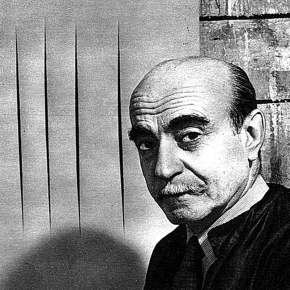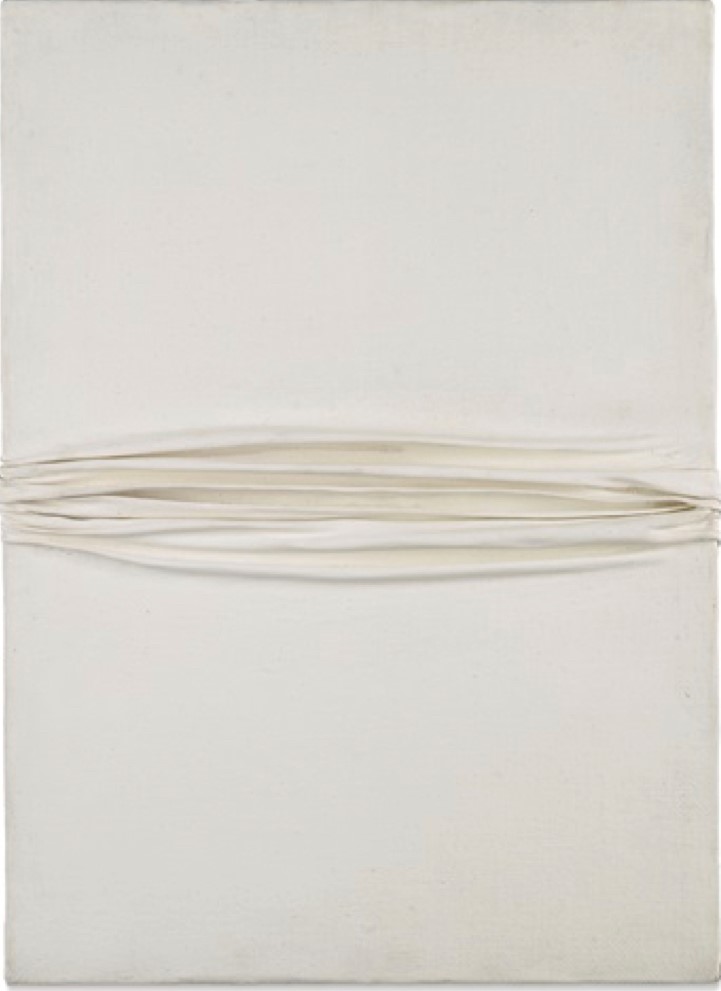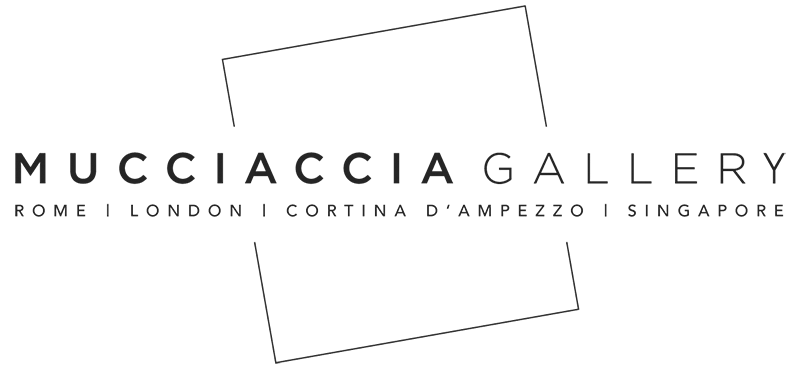Lucio Fontana
Born in 1899, in Rosario di Santa Fé, Argentina; dies in 1968 in Comabbio, Italy.
His father, Luigi, was an Italian sculptor, and his mother the Italian theatrical actress Lucia Bottino. At the age of six, he moves from Argentina to Italy with his father. In 1921 he returns to Argentina and decides to devote himself to sculpture and begins working in his father’s atelier Fontana y Scarabelli. After the success in the competition for a memorial to Louis Pasteur for the Faculty of Medicine at the Universidad Nacional del Litoral, in 1924 he opens a sculpture studio in Rosario, but in 1927 he returns to Milan to attend the course of sculpture by Adolfo Wildt. During the war he is back in Argentina where he begins to develop the concept of Spatialism. He returns to Milan and he befriends a group of young artists participating in the first Manifesto of Spatialism, signed not only by Fontana, but also by the critic Giorgio Kaisserlian, the philosopher Beniamino Joppolo and writer Milena Milani. In 1949, he presents at the Galleria del Naviglio in Milan, the Spatial Environment in Black Light and in the same year he starts the cycle of Holes, with which he goes beyond the traditional division between painting and sculpture, practicing on the surface holes and graffiti putting the work in direct relationship with space and with real light. In the 1960s he devotes himself to the creation of a series of oil paintings called End of God, all of the same monochrome oval shape, perforated with holes, rips or sprinkled with glitter.

EXHIBITIONS

ITALIAN PASSION FROM 1956
2017

